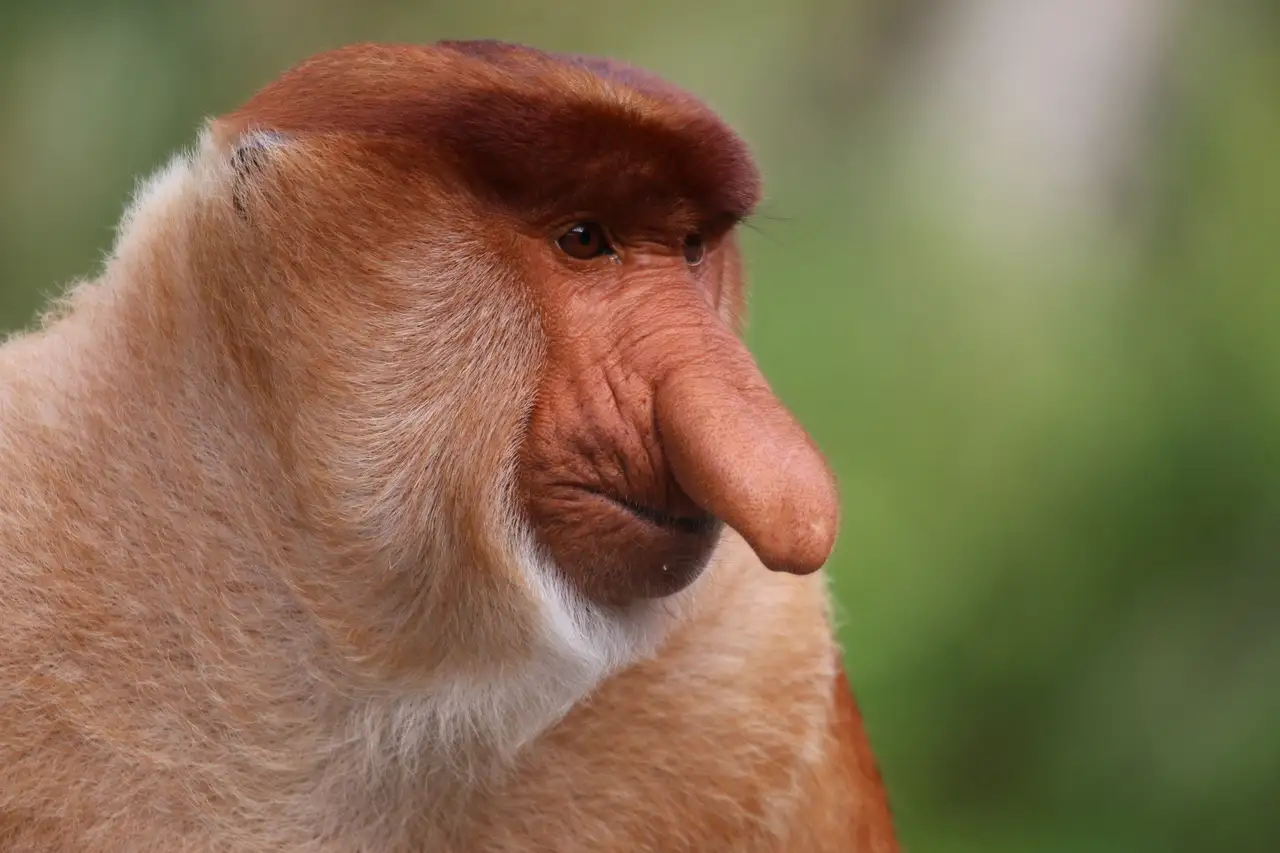If you’re looking for Animals With Weird Noses in The World, then you are at the right place. In this article, we will discuss the 10 Animals With Weird Noses in The World.
As a unique organ, the nose plays a role that cannot be ignored. Not only is it the channel through which we breathe, but it is also the primary sensory organ for our sense of smell. There is a strong connection between the form and function of the nose, allowing us to experience the diversity of the world. But in this world are many animals with weird noses. In this article Let’s explore the 10 Animals With Weird Noses in The World.
10 Animals With Weird Noses
1. Elephant
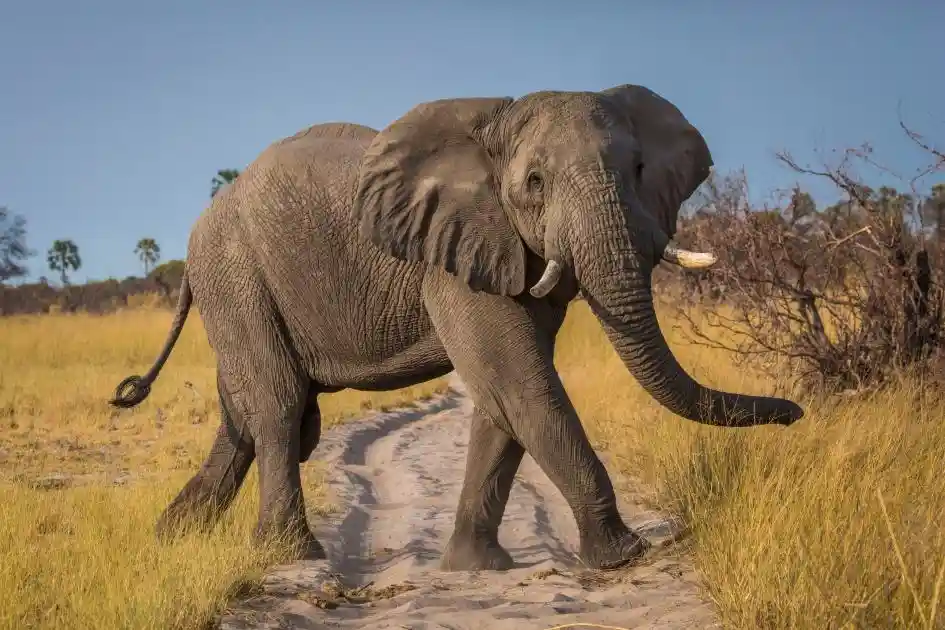
The trunk of the elephant is known as a “flexible and powerful hand”. However, strictly speaking, the “elephant trunk” is not a nose, but an organ composed of the nose and the upper lip. With the cooperation of more than 40,000 muscles and tendons, an elephant trunk nearly 2 meters long can roll up objects weighing more than tens of kilograms. The two finger-like protrusions around the nostrils can dexterously “pinch” small objects such as leaves. It can be said that it is “thick but fine”.
Elephants are veritable “big eaters” and eat about 150 kilograms of plants every day. Their trunks can pull branches, pull off leaves, peel off bark, uproot roots, and of course, pick up round fruits from the ground. If the food is too high to reach, the elephant can also use its thick trunk to wrap around the tree trunk, use its tusks and body to push the tree down, and then slowly chew the fruits of victory.
When drinking water, the elephant with a shoulder height of nearly 4 meters will not lower its “cold” head. It will use its trunk to draw water into its mouth. Even when lakes and swamps are on the verge of drying up, they can use their trunks to dig shallow holes in the mudflats to collect clean water.
When bathing in the water, the elephant’s trunk acts like a shower head, absorbing water and spraying it all over the body. In order to prevent sunburn and parasite infestation, the long nose can also pick up sand and scatter it on the body. When swimming across a river, the elephant’s trunk becomes a breathing tube for diving, extending above the water to keep breathing. When communicating with sounds, the elephant trunk is also an indispensable vocal organ.
2. Tapir
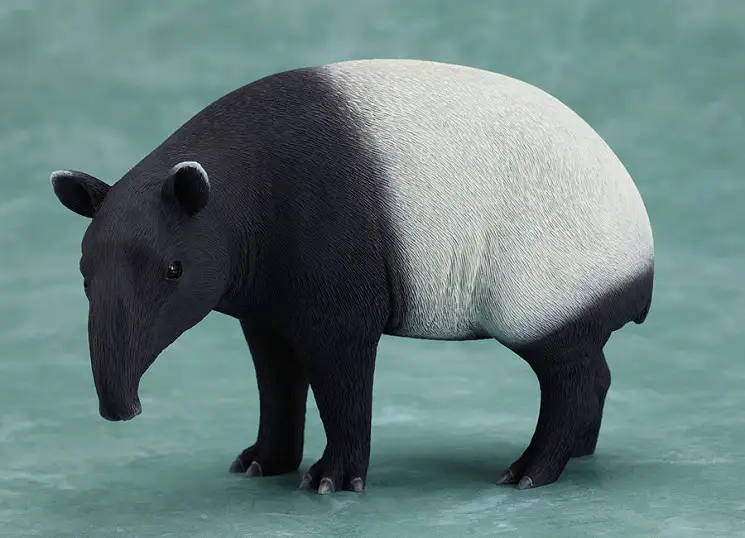
The tapir (Tapirus indicus) is a large mammal living in Southeast Asia. They are over 2.5 meters long and are nocturnal vegetarians. This animal has very poor eyesight and relies mainly on its keen sense of smell and hearing to survive in forests and swamps.
The tapir’s “long nose” looks like a “lower version” of an elephant’s trunk, which is also composed of a nose and an upper lip. Malayan tapirs and elephants are not closely related, and their similar trunks are simply the result of convergent evolution.
Malayan tapirs use their sense of smell to search for food. By raising their noses and exposing their gums, they can identify the urine marks left by other species around their territory.
Tapirs often live near water and spend most of their lives in the water. They can close their nostrils and hide underwater for about 90 seconds, and their long noses can also wrap around plants in the water. When swimming, tapirs raise their noses out of the water to use them as breathing tubes.
3. Shrew
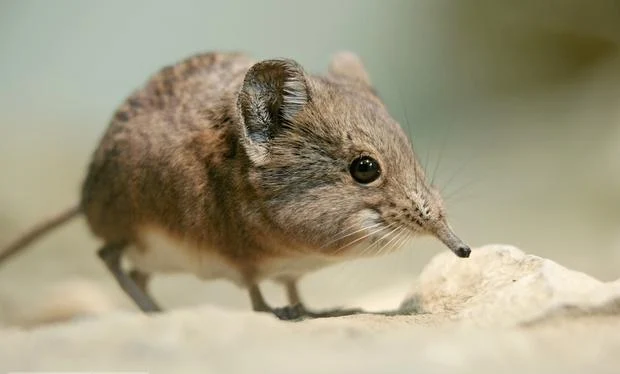
The shrew (Rhynchocyon petersi) lives in dense forests on the east coast of Africa and is a master at using its long trunk to find food. This small animal is less than 30 centimeters long and looks smaller than Rattus norvegicus. It is worth noting that they are neither mice nor shrews, but very primitive mammals.
The shrew’s slender nose is like a flexible probe, sniffing around quickly while probing and rummaging through the dead branches and leaves at the bottom of the forest. They mainly feed on insects such as beetles and termites.
They use their long noses to dig holes in the soil and then lick the insects into their mouths with their tongues. Shrews have a strong sense of territory. In order to identify the scent marks around them, their trunks are always sniffing and twitching. The long nose can also come in handy when building nests out of dead leaves and clearing “emergency roads” for escape.
4. Elephant Seal
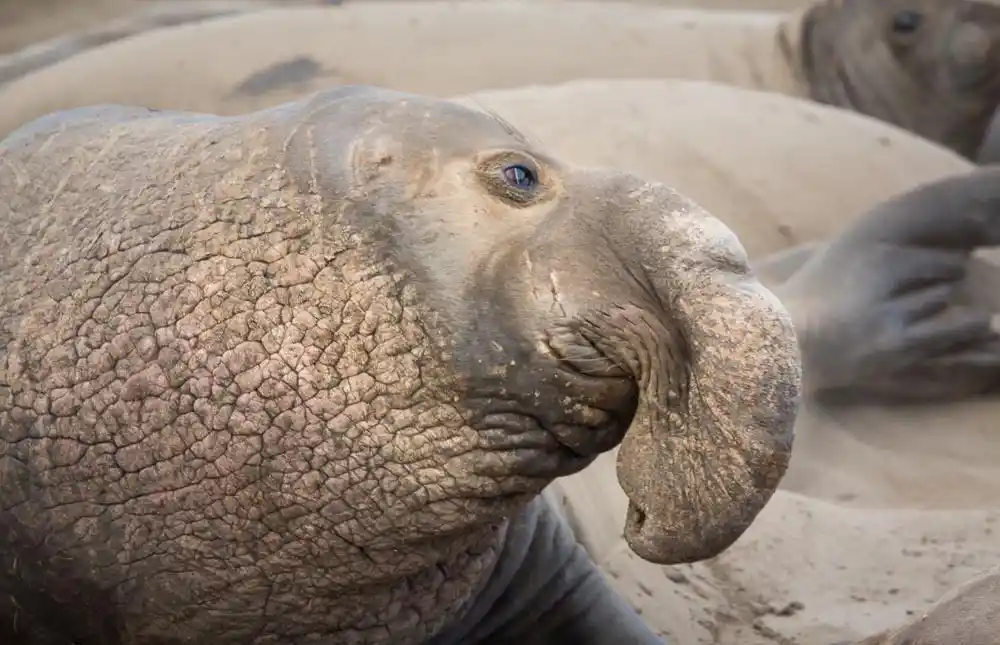
The northern elephant seal is a giant beast that inhabits the waters of the Northeast Pacific. They breed and raise their young primarily on remote islands off the west coast of Canada, the United States, and Mexico. The seals exhibit significant “sexual dimorphism”, where males and females look very different.
On the beach from December to January, male elephant seals twist their huge bodies, show off their big trunks, and make huge roars through their nose to show their male charm and intimidate competitors. It can be said that a long nose is a stepping stone to obtain mating rights.
In addition to showing off and making noise, the male’s long nose also functions as a “humidifier.” After the breeding season arrives, male elephant seals will fast on the coast for nearly three months to focus on falling in love. Although their whole bodies are covered with thick fat and they are relatively “hungry”, stopping eating also reduces the source of fresh water – the water elephant seals need is mainly obtained from food and fat.
Fortunately, the long nose of male elephant seals is full of cavities and can retain some moisture when exhaling. This moisture is undoubtedly precious for males who are extremely short of water. Female elephant seals only fast for about 35 days during the breeding period, and their water needs mainly rely on fat decomposition.
5. Proboscis Monkey
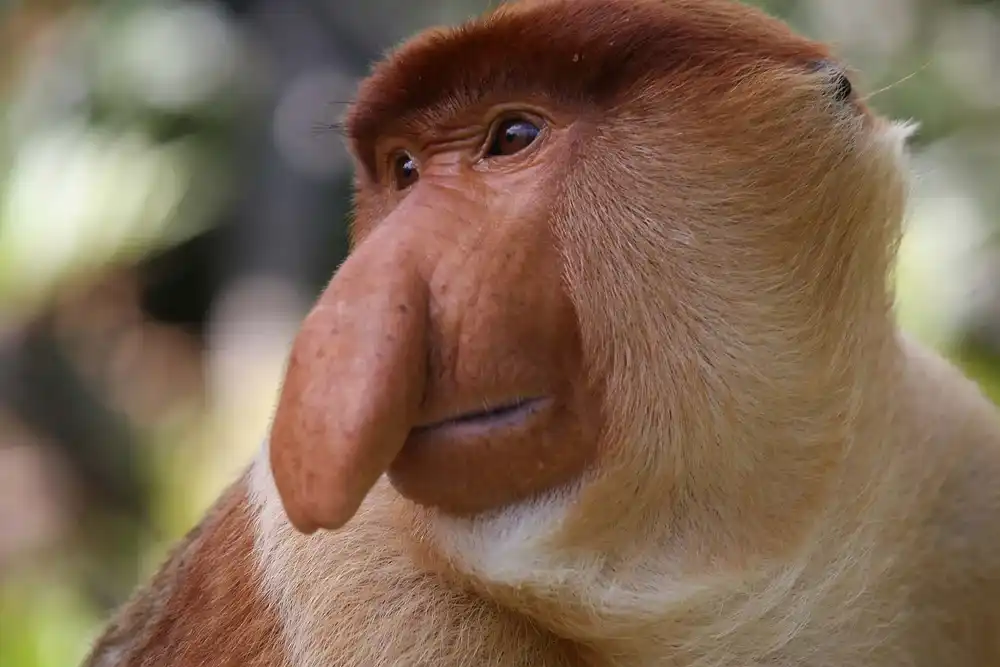
The proboscis monkey (Nasalis larvatus) is a species native to the Southeast Asian island of Kalimantan. Locals nickname this monkey “Dutch monkey” because the nose of the male proboscis monkey resembles that of the Dutch colonists who used to run plantations on the island. The monkey’s large nose is so unforgettable that its taxonomic “genus name” is the Latin “Nasalis”.
The nose of a male proboscis monkey is more than 10 centimeters long. Although the nose of a female is not small, it is far less exaggerated than that of a male. Some theories believe that the reason why proboscis monkeys have male and female noses is due to “reproductive selection.” To put it simply, female proboscis monkeys particularly prefer males with larger noses and louder vocals. As a result, the gene for the big nose of male individuals has been passed down from generation to generation and has become mainstream in the group.
The male’s nose is a secondary sexual characteristic that grows slowly before adulthood. In addition to their noses, male proboscis monkeys are also larger than females. The “sexual dimorphism” of this species is relatively obvious. During the breeding process, the “harem system” of one male and multiple females is also the mainstream among the proboscis monkey population.
6. Saiga Antelope
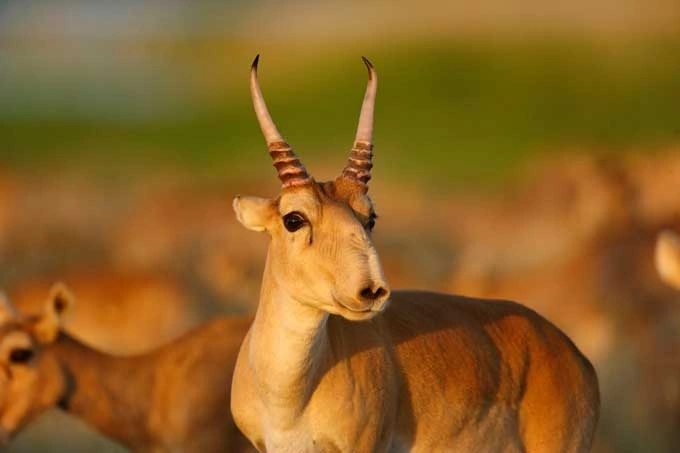
The saiga antelope (Saiga tatarica) is named after their bloated and oddly long nose. This herbivore is mainly distributed in the Gobi Desert in Central Asia, and its population is very rare, which makes research on them difficult. Historically, scientists have speculated a lot about it. Some people even believed that the nose of the saiga antelope could drink water like a straw. But it turned out that this idea was wrong. What is the mystery behind this 14-centimeter-long nose shared by both sexes? With the development of modern science, the function of the saiga antelope’s nose has been gradually revealed.
Some theories believe that the nose of the saiga antelope is closely related to its migration habits. In some areas, saiga antelopes migrate in winter and summer. They can run extremely fast, reaching 80 kilometers per hour. Running nearly 100 kilometers a day at such high speeds in the scorching heat and freezing temperatures can be imagined as a challenge to the respiratory system
Research on the vocal function shows that the long nose of the saiga antelope can extend its respiratory system by about 20%, which allows them to produce rich and varied sounds. This function is most evident in males during the breeding season. Scientists have found that although both male and female saiga antelopes can use their noses to make sounds – “nasal sounds” – the females straighten and relax their noses when making sounds, while the males mobilize their nose muscles, sometimes raising their noses, and sometimes raising their noses.
7. Echidna
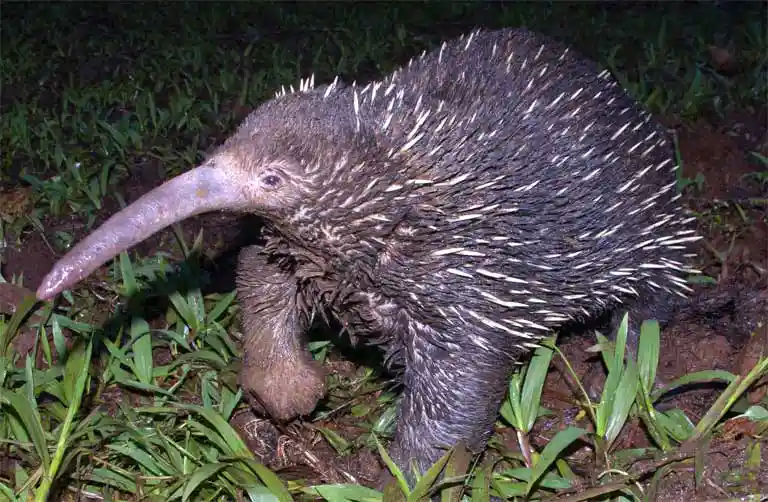
Echidna is the collective name for the echidna family. One of the most primitive mammals. There are 2 genera and 4 species. The back and sides of the body are covered with hard spines, and there are hairs under the spines; the ventral surface is spineless and hairy, with a hairless area in the center where the female’s pouch is formed; there is a single cloacal hole near the base of the tail.
The echidna has a long and slender snout, with nostrils and mouth at the end of the snout; a small mouth, no teeth, and a slender tongue; small eyes; an external ear shell, partially hidden in the hair; short limbs, all with 5 toes; male hind limbs have poisonous spurs on the ankles; The tail is short and exposed below.
The head of the echidna is gray-white, with a long, hard, hairless, tubular mouth at the front. The mouth has no teeth, just a small hole, and is bent; the nostrils and mouth are located at the front end of the beak; the tongue is long and filled with mucus.
8. Star Nosed Mole
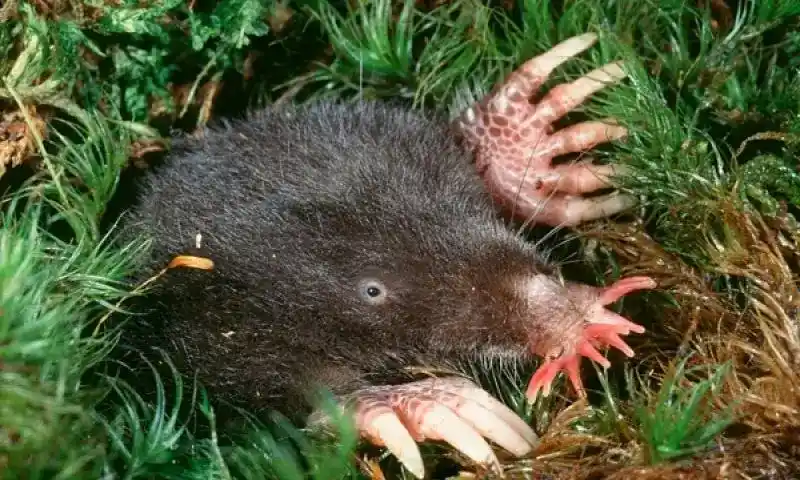
Star-nosed mole, which grows in eastern North America, eastern Canada, and the northeastern United States. In addition to being ugly, this mouse also has a very powerful feature. It is listed in Nature magazine and Guinness World Records. It is rated as the fastest-eating animal. It is small in size, weighing only 35 to 75 grams. The ugly part is its nose. Its unique flower nose has 22 tentacles.
Because the tip of its nose has 22 tentacles surrounding the tip of its nose like stars, people call it the star-nosed mole. Its eyesight is very poor and almost zero. Not only is it the fastest-eating animal in the world, but don’t look at it. Despite its poor eyesight, it is also the fastest mammalian predator in the world. The star-nosed mole can complete the entire process of determining the location of its prey and hunting it in an ultra-short time of 0.25 seconds.
The star-nosed mole is also a good swimmer, which is one of the reasons why it is difficult for aquatic insects to escape its clutches, because the tentacles on its nose are extremely powerful, functioning like human retinas and bats’ ultrasonic waves, and its tentacles are extremely It is sensitive and can quickly sense the surrounding environment and any movement, allowing it to quickly determine the location of its prey.
9. Hooded Seal
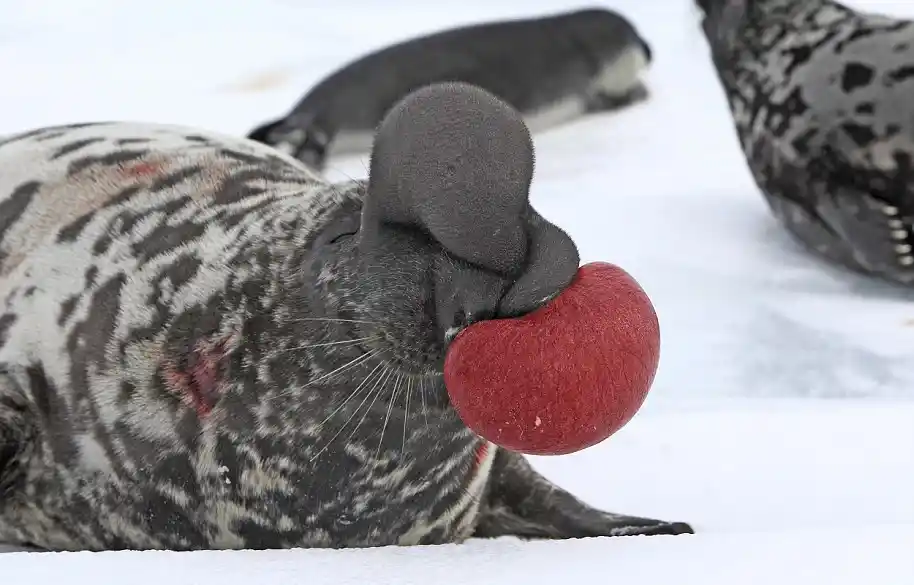
The hooded seal, also known as the cyst-nosed seal, is an animal of the genus Cystophora in the family Sealidae. Male and female hooded seals are covered with a layer of bright blue-gray down, mixed with some irregularly arranged black markings.
The body of a male hooded seal can be 2.4 meters long and weigh nearly 295 kilograms; the female hooded seal is smaller, with a body length of nearly 2.1 meters and an average weight of 159 kilograms, but can soar to 182 kilograms in the early stages of childbirth.
Male hooded seals have an inflatable “cap” on top of their heads. Males don’t have hats until they are about 4 years old. When inflated, it hangs above the upper lip. The male inflates this red, balloon-like nasal septum until it sticks out of one nostril. They have the largest noses. The skull is short and the nose is broad.
10. Golden Snub Nosed Monkey
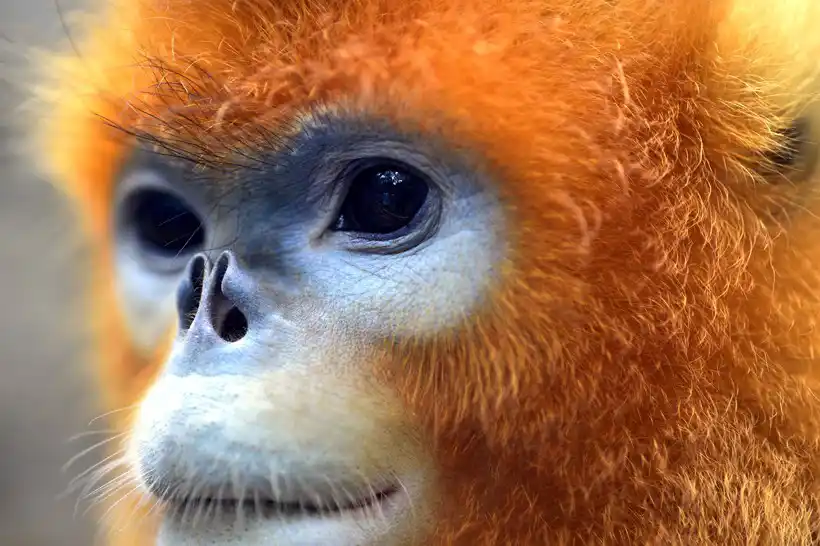
The golden monkey is the collective name for animals of the genus Rhinopithecus in the family Primate Monidae. Also known as the snub-nosed monkey, there are five species of snub-nosed monkeys, namely the Yunnan golden monkey, the Guizhou golden monkey, the Sichuan golden monkey, the Vietnamese golden monkey, and the Myanmar (Nujiang) golden monkey .
The golden monkey is characterized by soft fur, mainly white, with black or gray markings on the head, chest, limbs, and tail. Their noses are upturned and triangular. Their body length is about 50-70 cm, and their tail length is about 60-90 cm. Males are slightly larger than females.
Golden monkeys are omnivorous animals that mainly feed on plant leaves, flowers, and fruits. They also eat bamboo shoots, moss, fungi, and insects. They like to move in high mountains and dense forests, and their habitats are generally between 1,500-3,500 meters above sea level. Their long hair helps them withstand the cold.
Summary
These were the 10 Animals With Weird Noses in The World. If you know about more animals then please comment down.

